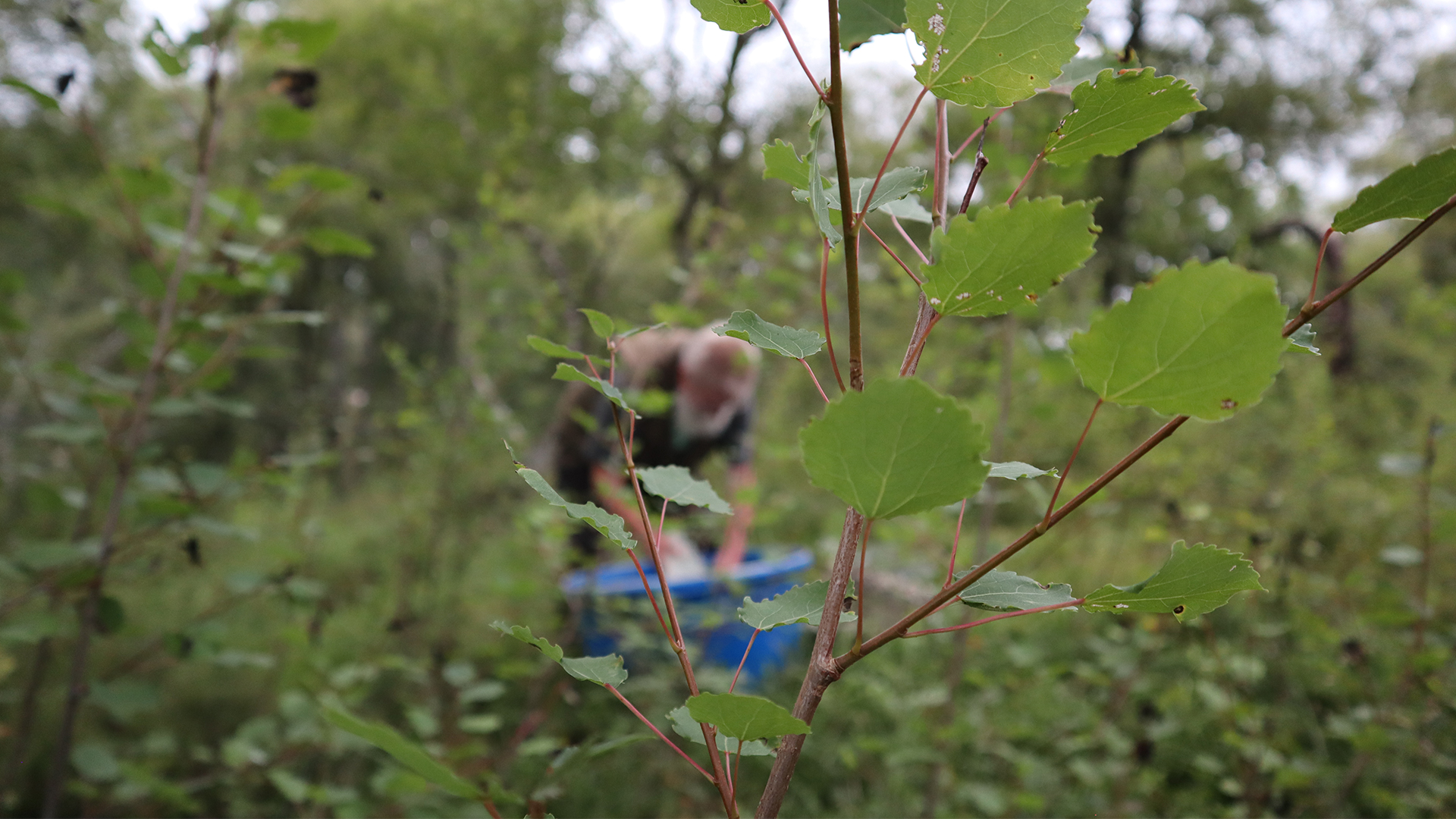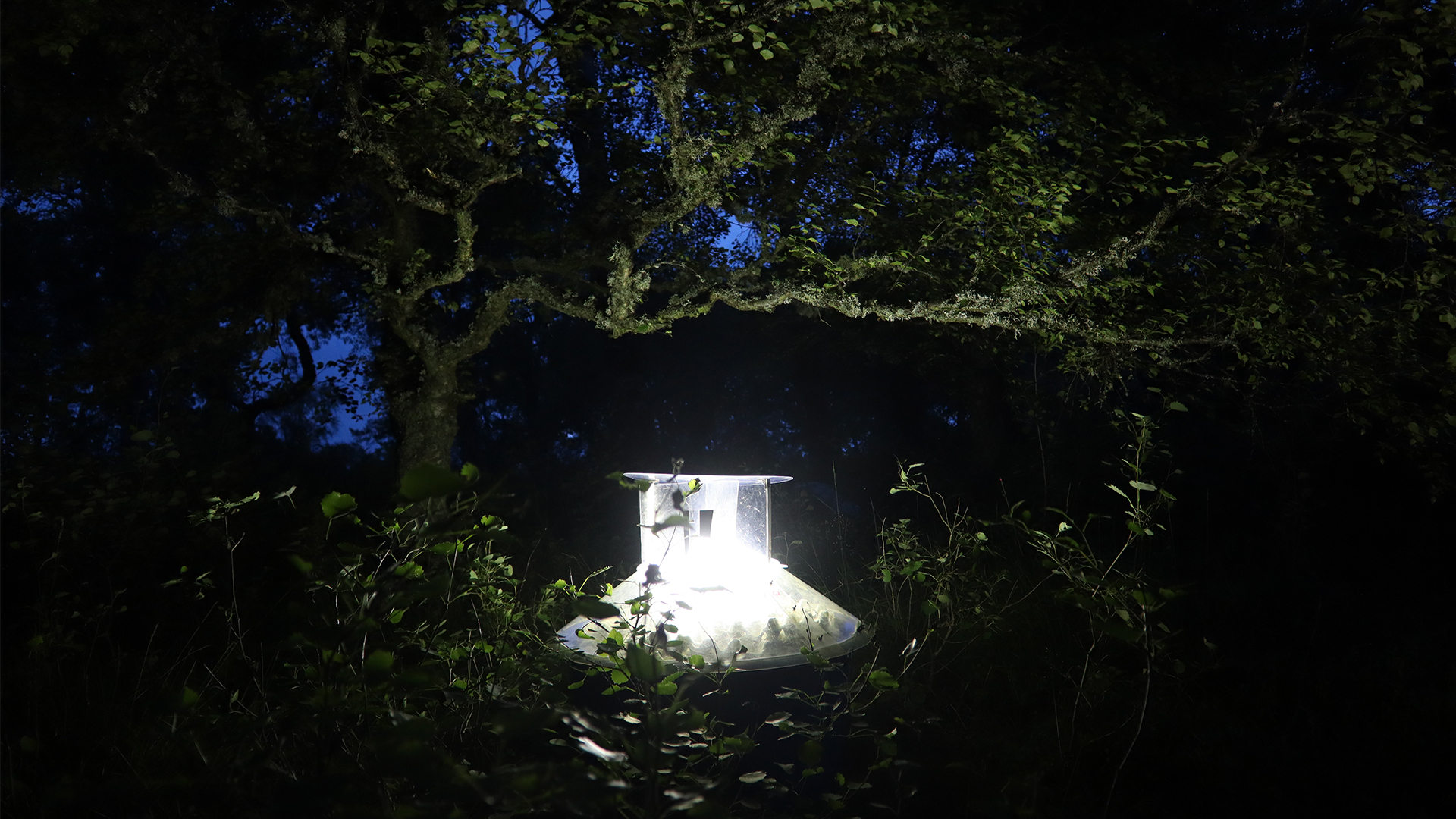

Pete Moore, retired Warden of RSPB Scotland Insh Marshes, sat down to chat about these rare Moths with Lizzie Brotherston, Communications Officer for Cairngorms Connect.
Pete Moore has a long history of working with the local flora and fauna during his time at Insh Marshes, and it was while working there that he first joined the Dark Bordered Beauty Moth Steering Group.
After Pete retired from the RSPB, he continued his work with these Moths and has recently been named Dark Bordered Beauty Moth champion by the Rare Invertebrates in the Cairngorms project.
Can you start by telling me a little about Dark Bordered Beauty moths and why they are so rare?
Dark Bordered Beauty moths are only present in two colonies in Scotland and one in England, so they are super rare. At the moment, one site is in Aberdeenshire and one site is at RSPB Scotland Insh Marshes. In Scotland, the Moths only eat Aspen, and specifically only Aspen suckers. Aspen doesn’t often produce seed so mostly it spreads by putting up suckers, clone shoots, from the tree’s root system.
 Setting a live-catch Moth trap amongst Aspen suckers at RSPB Scotland Insh Marshes. Photo: Lizzie Brotherston, Cairngorms Connect
Setting a live-catch Moth trap amongst Aspen suckers at RSPB Scotland Insh Marshes. Photo: Lizzie Brotherston, Cairngorms Connect
Unfortunately, we have fragmented our Aspen woodlands and created hard boundaries with historic land management practices and overgrazing from deer and livestock, which means there aren’t these waves of new suckers coming up and surviving. A healthy level of browsing would mean that there are enough Aspen suckers, kept at the right size, for the moths to eat without all maturing into trees. It’s a balance. There are patches of this habitat around the Strath, but not enough to support many colonies of Dark Bordered Beauty Moths.
The Moths were first found on Insh Marshes in 2010. There used to be a population near Grantown-on-Spey but sadly it started to slowly decline and there haven’t been any Moths seen there since 2019. We now realise that is because the quality of the habitat had deteriorated due to overgrazing.
 Damp paintbrushes are used to transfer Dark Bordered Beauty Moth eggs on to Aspen suckers. Photo: Pete Moore
Damp paintbrushes are used to transfer Dark Bordered Beauty Moth eggs on to Aspen suckers. Photo: Pete Moore
What work is being done to help this species?
For some time, people have been saying it’s really risky having a species that is only found in so few sites. All we did was talk for years, but when we lost the Grantown population we realised we had to get serious about conserving the species and that’s when we decided to create a captive breeding program. I did captive breed some in my living room, but as you can imagine it’s not ideal! So, when the Royal Zoological Society of Scotland got involved that was brilliant as they have staff who are experts in rearing and breeding insects and the professional facilities to do it in.
And because the staff are there all day, watching and filming what happens, we’ve been able to find out all kinds of information about Dark Bordered Beauty Moths that we didn’t know before.
In 2021, I collected about 40 eggs from the Insh site and gave them to RZSS at the Highland Wildlife Park, who hatched them and reared them to adults that went on to produce their own eggs. We went from 40 eggs to 500 in one season!
 Kirsty helps with Dark Bordered Beauty Moth releases earlier this year. Photo: Jack Ward
Kirsty helps with Dark Bordered Beauty Moth releases earlier this year. Photo: Jack Ward
We released the first caterpillars in 2023 at a new site within the Cairngorms National Park and earlier this year we put out eggs and larvae at the same site. We’re monitoring them closely to make sure everything is going well, but hopefully that will be enough to establish a population.
This work is part of the Rare Invertebrates in the Cairngorms (RIC) project, a partnership involving RSPB Scotland, the Cairngorms National Park Authority, Buglife Scotland, Butterfly Conservation Scotland and NatureScot.
We’re also continuing to monitor the sites on RSPB Scotland Insh Marshes every year. The monitoring consists of setting live-catch moth traps as darkness falls and then going back at dawn to identify what species have been attracted to the light of the trap. We do this monitoring in July and August, when the adult moths are flying, and it helps give an indication of how their numbers are doing.
 A female Dark Bordered Beauty Moth on an Aspen leaf in a temporary clear plastic container for monitoring before being returned to the undergrowth. Photo: Lizzie Brotherston
A female Dark Bordered Beauty Moth on an Aspen leaf in a temporary clear plastic container for monitoring before being returned to the undergrowth. Photo: Lizzie Brotherston
Why do you feel it is important to save Dark Bordered Beauty moths?
Because this species is so rare, it seems unlikely that it would have a significant impact on the ecosystem if it went extinct – but there are so many linkages between plants and animals that we are only just working out now. I feel that if we have the ability to save a species from going extinct, we should do it for future generations. They are beautiful creatures, and if it is within our control we should do what we can to stop it.
The other thing is that Dark Bordered Beauty moths are totally connected with Aspen and so by protecting this species, we can make a case for protecting and restoring Aspen woods which will in turn help restore the wider ecosystem. This work helps us look at bigger habitat rather than just focussing on this one species.
 A Moth trap glowing brightly under a tree, surrounded by Aspen suckers, on RSPB Scotland Insh Marshes. Photo: Lizzie Brotherston
A Moth trap glowing brightly under a tree, surrounded by Aspen suckers, on RSPB Scotland Insh Marshes. Photo: Lizzie Brotherston
So what’s next?
We’ve been working with local farmers and other land managers who are helping us improve habitats around Grantown and elsewhere to create more suitable sites for releases.
We’ve been looking at another potential release site within the Cairngorms Connect Partnership area and so we're hoping to do some more releases later this year. Since there has been an increase in Deer Management, there has been an increase in Aspen regeneration which helps create more habitat.
In the long term, we want to create more habitat and help to connect existing sites so that the moth populations can start making their own way between them. That’s the long-term hope.
Join Butterfly Conservation and Cairngorms Connect at RSPB Scotland Insh Marshes this Saturday (27th of July 2024) as we look through live-catch moth traps and hopefully get a glimpse of the rare Dark Bordered Beauty.
Feature photo: Male and female Dark Bordered Beauty Moths by Roy Leverton
Conservationists in Scotland have kicked off a unique four-month ‘Easter egg hunt’ involving one of the UK’s rarest and most beautiful moths.
Five years of raptor data has been published by WildLand Cairngorms in a new report showing the positive impact of ecological restoration work.